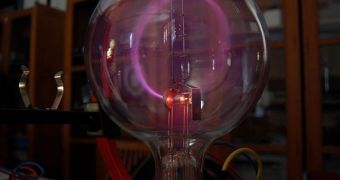UltraFast Innovations GmbH is a joint initiative from German researchers at the Ludwig-Maximilians-Universität (LMU), in Munich, and the Max Planck Society (MPS), which aims at providing research communities with dedicated optical systems, capable of keeping track of things as small as electrons moving from one atom to the other. At the level of complexity physics operates today, this is absolutely necessary, albeit difficult to do.
Whenever atoms exchange electrons, the negatively charged particles move from around one nucleus to the other in time intervals known as attoseconds. An attosecond is equal to a billionth part of a billionth second, which is unfathomably small.
Pulsed laser light and X-rays are oftentimes the only means of scientific observations available to teams of investigators looking into how nanomaterials, for example, change properties when they gain or lose electrons. Of course, keeping track of what electrons do in certain circumstances is also of tremendous use in other research fields as well that are not necessarily connected to nanotechnology or particle physics.
“Since the development and manufacture of optical elements is an integral part of our scientific work, we can immediately incorporate the latest research results into our designs. New optics can then immediately be subjected to practical tests,” the Managing Director of the new company, Dr. Jens Rauschenberger, explains. The new company, he adds, will facilitate the experts' access to the Munich Centre for Advanced Photonics' (MAP) Service Center for Surface Coatings and Optics. The Center is a world-class facility specialized in creating optical-system components of the utmost precision.
“Apart from enabling better utilization of existing technical capacities, we at UltraFast Innovations can also provide important new impulses for research activities, because the profits from the business can be reinvested in the scientific institutes, or used to finance new positions,” Jens Rauschenberger says. The expert argues that the company's ability to provide devices capable of producing 80-attosecond laser pulses offers a huge boost to researches conducted on electrons and other similar, fast-moving particles.
“Such light pulses give us the opportunity to observe the movements of electrons in atoms and molecules in real time. It is like using a camera. To capture a sharp image of a fast-moving object, you need very short exposure times,” he concludes.

 14 DAY TRIAL //
14 DAY TRIAL //